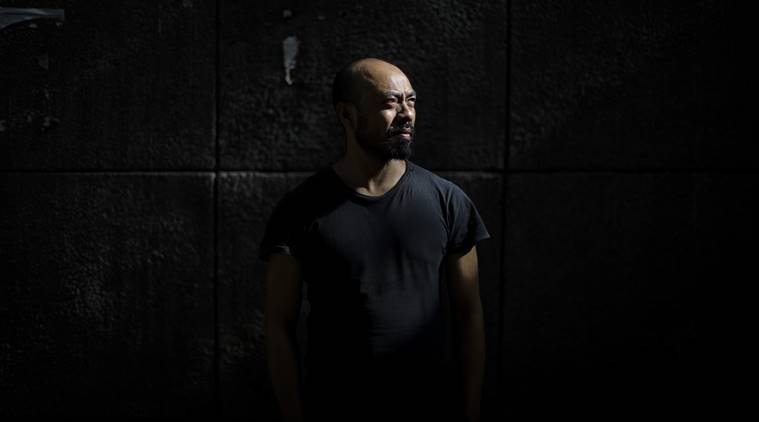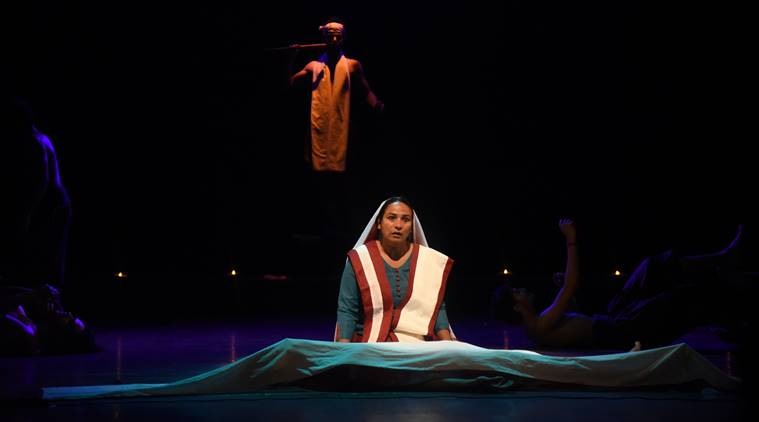
In 1993, at a security check-post a short distance from Imphal, Manipur, a teenage boy was caught with a pair of camouflage half-pants stuffed in his school bag. The paramilitary personnel hauled him off the bus he was travelling in and held him in detention for interrogation. Now a 42-year-old theatre director, Joy Maisnam remembers telling them that he was an actor and the half-pants were for rehearsal. “In Manipur, the camouflage that the army wears cannot be used by the common people. Things are getting better in the state, but I grew up when both underground revolutionaries and the jawans were dying. For common people, every day was a struggle. If there was a bomb blast, we got beaten by the army for supporting the militants. On the other hand, the militants would kill us because they thought we had informed the army. In my time, I was beaten a lot. I escaped, unlike the people I would see lying dead on the roads every day when I went for tuitions,” says Maisnam.
Last month, at the 14th Mahindra Excellence in Theatre Awards (META), Mais-nam’s 2017 adaptation of Dharamvir Bharati’s Andha Yug, a critique of war drawn from the Mahabharata, was awarded the best play, best stage design and best costume prizes and tied for best innovative sound design award with Maya Krishna Rao’s Loose Woman. Maisnam played up another conflict in this story — that of class. “Death is not the great leveller when prin-ces get ritual burials and nameless soldiers are merely disposed of. My concern in all my plays is the plight of the common man,” he says.

Maisnam is from Pungdongbam village, 13 km from Imphal, where Manipuri is the language of conversation and education. He had no knowledge of Hindi or English when he arrived in 2003 to pursue an acting course at the National School of Drama (NSD) in Delhi. “My batchmate, now wife, Sajida, taught me Hindi. When I went to London International School of Performing Arts (Lispa) to pursue an acting course in 2014, I found people speaking in different, unfamiliar accents. I thought, ‘There must be an international language that would enable me to show my plays everywhere’,” he says. Thus was born Maisnam’s vocabulary of psycho-physical theatre in his first directorial venture Nine Days Newspapers (2012).
He tapped into the potential of communicating “through body movements only”. He tells actors, “When you don’t have a lot of dialogues, you speak with truth. So, feel the emotion, else the audience won’t feel it either.” “Physical acting is very difficult. It is not like learning dialogues and saying it on stage. You have to train your body rigorously,” he adds. Andha Yug had only seven pages of dialogues but “spoke” through actions derived from Tai-chi, yoga and the martial arts form thang-ta. He had picked up Tai-chi, yoga and thang-ta in Manipur and learnt chhau at NSD.
His knowledge of the sync between movement and emotion emerged from the intense scrutiny of his own body. At NSD, he had talked a guard at Abhimanch theatre into opening a little early so that he could work alone. “I used to concentrate on my rhythm and the changes in the body in every process. I began to find out how physical and psychological elements of the body are connected,” he says. As a student project, he developed a character in which he used yoga, not for its calming effects but to reveal a wild spirit. He studied the works of theatre director and writer Maya Krishna Rao and actor Adil Hussain, and the methods of Polish theatre director Jerzy Grotowski.
Today, the hallmark of Maisnam’s group Treasure Art Association, Manipur is its cast’s multiculturalism. Maisnam selects performers for a play from across India and lets their physical methodologies harmonise into a completely different performative language. In Andha Yug, performers are from states such as Uttarakhand, West Bengal and Bihar. “I believe that the form, which is created when different cultures meet, is Indian in nature,” he says.
His father, Maisnam Chandra Meitei, was a famous actor, who used to play villainous roles in Shumang leela, a commercial theatre form of Manipur. He had won a state award before he took to the bottle. “My father used to fall down where he was drinking and I would go and bring him back, sometimes carrying him on my back. He had to leave acting when he was about 40 because he could not handle it. I was barely 10 at the time,” he says. At home, there would be frequent arguments between his parents during which a young Maisnam would write “I want peace” on the wooden walls of his room on the roof. “My parents have kept the room intact, and I can still see my whole history written in black marker, pencil or ink on the walls,” he says.
A shy child, Maisnam would accompany his parents to plays that were held in open fields with audiences on all four sides, and where the only music was that of the dholak in those pre-microphone days. He wanted to be a footballer, a second Maradona, and was successful at the state level until a fracture restricted his movements for several months. “My father asked me to leave football and think of something else. I thought, ‘acting’. My father laughed because he had left acting and turned to farming. He asked me not to go into theatre.”
Once he recovered, Maisnam started working as a labourer at construction sites, earning between Rs 15 and Rs 30 per day. “In 1997, my father was not keeping well and we had sold our land to make ends meet. I knew there would be no money for my education. Whatever money I got as a labourer, I used to pay for my studies and provide for the family,” says Maisnam, who graduated in history and geography from Manipur University in 2005. “When I go to Imphal, I see houses I had made as a labourer,” he says. He also trained in theatre from Guru Late Sanakhya Ebotombi, travelling for several hours every day to Imphal from his village.
After NSD, Maisnam joined the NSD Repertory Company in 2008 as an actor. The memories of the disturbances in Manipur he had witnessed while growing up haunted him. “I read newspapers a lot and I was becoming depressed about the condition of the common people in Manipur,” he says. He returned to the state and wrote and directed a play, Nine Days Newspapers, based on incidents reported in the press. A dream he used to frequently see when growing up influenced another play, Dream, which he created at Lispa. In the dream, he’s walking alone in a white landscape, calling out but unable to hear his own voice. In the play, of 15 minutes, he shows himself falling under the burden of the dream.
After returning to India, he has created plays drawn from sociopolitical upheaval. Echo (2015), based on a story by his younger brother Binod Maisnam, is about a bird called Nongin, environmental degradation and the efforts of a king to preserve the bird’s natural habitat from the grubby hands of industrialists. Maisnam’s troupe travelled to the Colombo International Theatre Festival in 2015 with The Dance and The Railroad, an ode to the working classes that keep culture and art alive. One of his critically acclaimed plays, Journey of Sorrow (2017), revolves around farmer suicide. He is fine-tuning a performance titled Where is My Country? Where is my Land?, in which the disenfranchisement of the Rohingyas becomes a metaphor for the global spread of homelessness. “When nations drive out people, where will they go? If the world removes me, where will I go?” he asks. “If I can’t do something good for society, I should leave this profession. I want to be a revolutionary who uses art to benefit society,” he says.